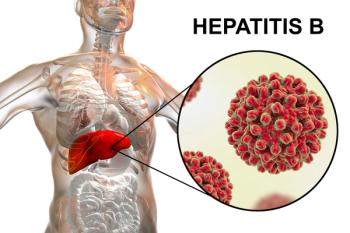
A good intention gone wrong: Rethinking ASHP's 2020 initiative
Sometimes unintended consequences take well-meaning endeavors to places they were never meant to go.
Kelly HowardBack in 2007, the American Society of Health-System Pharmacists (ASHP) published its now infamous 2020 Initiative. The 2020 Initiative outlined a requirement that by 2020, every entry-level hospital pharmacist possess a PharmD degree and complete a minimum of a one-year residency post-PharmD.
This was a lofty if not noble goal, to be sure, but one fraught with unforeseen obstacles and unintended consequences. Eight years after its inception, the 2020 initiative has created ripple effects throughout our profession that ASHP scarcely could have desired or predicted.
Top Pick:
Lousy odds for students
For starters, the number of pharmacy students graduating every year dwarfs the number of available residencies. To be fair, the vast majority of the approximately 14,000 students graduating this year may have no interest in completing a residency, but those who do face intense competition, the result of overall scarcity and disproportionate geographic distribution.
Editor's Choice:
The 4,056 students who did apply for a PGY1 residency in 2015 had only 3,081 positions nationwide to choose from. Pharmacy students graduating in Wyoming had only 3 PGY1 residency positions available in their state; Vermont graduates, just 2 positions. New Hampshire, Alaska, and Delaware do not have schools of pharmacy, but boast a combined total of 23 PGY1 residencies.* [For snapshots of four residency programs, see this month’s cover story.]
Worse for practicing pharms
It’s not difficult to imagine how the ASHP 2020 initiative might adversely affect new pharmacy graduates, but what about current pharmacists?
What I have found in my own experience is that the 2020 Initiative seems to have resulted in an environment of exclusion and narrow-mindedness in some hospital human resource departments that negatively affects any pharmacist without residency training.
For example, I was told by the hiring manager at a local regional hospital that I was not qualified for an entry-level PRN staff pharmacist position because I had not completed a residency, despite my 10 years of hospital experience and board certification in pharmacotherapy. I was not even granted an interview and was advised in a form e-mail to consider completing a residency before reapplying. Thanks, but no thanks.
I imagine that community pharmacists looking to make the leap to hospital pharmacy fare even worse in the application process. At the hospital where I work, I recently got a new full-time co-worker who had spent the entirety of her 15-year career working for nobody’s favorite chain pharmacy. Thanks to her years in the trenches, this pharmacist has an extremely enviable skill set not usually found in a newly-minted residency-trained pharmacist. She consistently operates at a high volume without errors, manages undue patience with even the prickliest of clinicians, and is capable of problem-solving in stressful situations. Fortunately for her and for our patients, our manager operates without blinders on and took the time to truly assess all the applicants, instead of simply discarding resumes not boasting a residency.
Oh, those good intentions
It’s hard to disagree that ASHP 2020 was initially very well-intentioned and founded on the solid goal of generating a higher level of pharmaceutical care for hospital patients nationwide. It’s also hard to disagree that it was hopelessly short-sighted.
Because the initiative fails to equate years of clinical experience with residency training, seasoned hospital pharmacists face unbridled discrimination during the application process.
And what about currently employed hospital pharmacists who lack residency training? Is it a matter of time before they face termination?
For new graduates seeking a residency in 2015, only 66% landed residency positions. What about the rest of them?
I doubt that this is what ASHP had in mind when it formulated the 2020 initiative.
We hospital pharmacists are constantly required to reassess and revise our policies, our procedures, our guidelines. Perhaps it’s time for ASHP to do the same.
Kelly Howard is a freelance pharmacist in Southeastern N.C. Contact her via
* This article was updated 12-23-15 to correct a previous statement that South Dakota has no school of pharmacy. South Dakota State University Pharmacy School is located in Brookings, South Dakota.
Newsletter
Pharmacy practice is always changing. Stay ahead of the curve with the Drug Topics newsletter and get the latest drug information, industry trends, and patient care tips.











































































































































































































